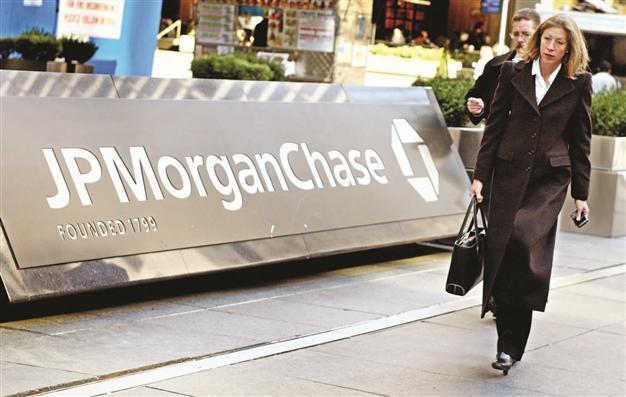JPMorgan makes huge blunder
NEW YORK / LONDON

Pedestrians walk past the JP Morgan Chase headquarters in New York in this file picture. JPMorgan Chase says it has taken an unexpected market loss in a trading book after a hedging strategy failed. AFP photo
PMorgan Chase, the largest bank in the United States, said May 10 that it lost $2 billion since March in a trading portfolio designed to hedge against risks the bank takes with its own money.“The portfolio has proved to be riskier, more volatile and less effective as an economic hedge than we thought,” CEO Jamie Dimon told reporters. “There were many errors, sloppiness and bad judgment.”
The trading loss is an embarrassment for a bank that came through the 2008 financial crisis in much better health than its peers. It kept clear of risky investments that hurt most of its peers. The dollar loss, though, could be less significant than the hit to Dimon and the reputation of a bank which was strong enough to take over investment bank Bear Stearns and consumer bank Washington Mutual when they collapsed in 2008.
JPMorgan had $2.32 trillion of assets supported by $190 billion of shareholder equity at the end of March - an equity ratio of almost 13 percent, four times the industry mean.
“Jamie has always styled himself as one of the kings of Wall Street,” said Nancy Bush, a longtime bank analyst and contributing editor at SNL Financial. “I don’t know how this went so bad so quickly with his knowledge and aversion to risk.”
JPMorgan shares fell almost 7 percent after the closing bell and dragged other financial shares lower, with Citigroup down 3.6 percent and Bank of America down 2.6 percent.
Dimon apologizes
Partly because of the $2 billion trading loss, JPMorgan said it expects a loss of $800 million this quarter for a segment of its business known as corporate and private equity. It had planned on a profit for the segment of $200 million.The loss is expected to hurt JPMorgan’s overall earnings for the second quarter, which ends June 30. Dimon apologized for the losses, which he said occurred since the first quarter, which ended March 31.
“We will admit it, we will learn from it, we will fix it, and we will move on,” he said. Dimon spoke in a hastily scheduled conference call with stock analysts. Reporters were allowed to listen.
Dimon said the type of trading that led to the $2 billion loss would not be banned by the so-called Volcker rule, which will ban certain types of trading by banks with their own money. The Federal Reserve said last month that it would begin enforcing that rule in July 2014.
“It’s a pretty stunning admission for a company that prides itself on its risk management systems and the strength of its balance sheet,” said Sterne Agee analyst Todd Hagerman. “The timing couldn’t be worse for the industry. It will have ramifications across the broker-dealer community.”
Regulators and lawmakers are now likely to push Dimon for more details about the trades.
If the trades were meant to hedge against specific risks as opposed to clearly being done as a proprietary bet on the markets, it may not play as clearly into the Volcker rule debate as supporters of the crackdown want it to, she said. “The question is whether this in fact was a hedge and I think that’s to be determined,” she said.
















